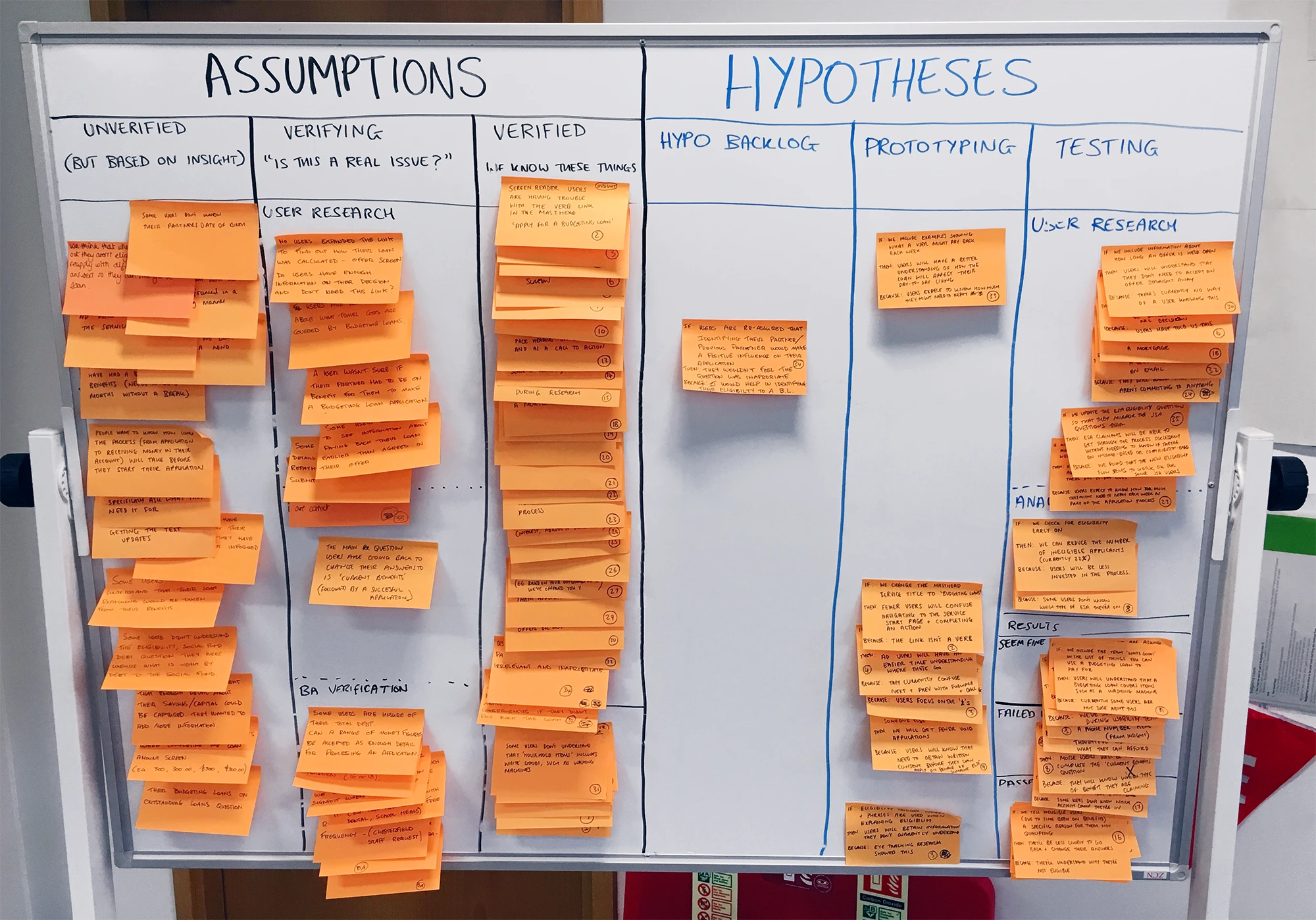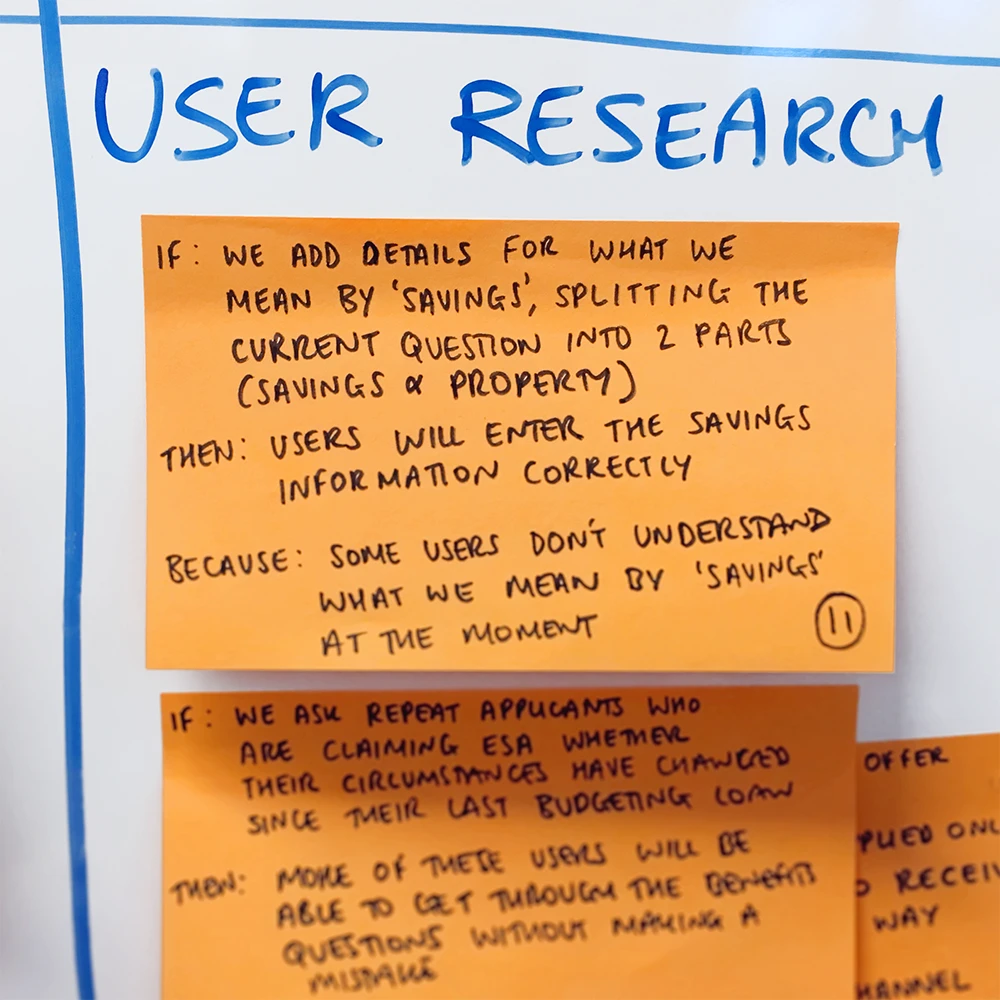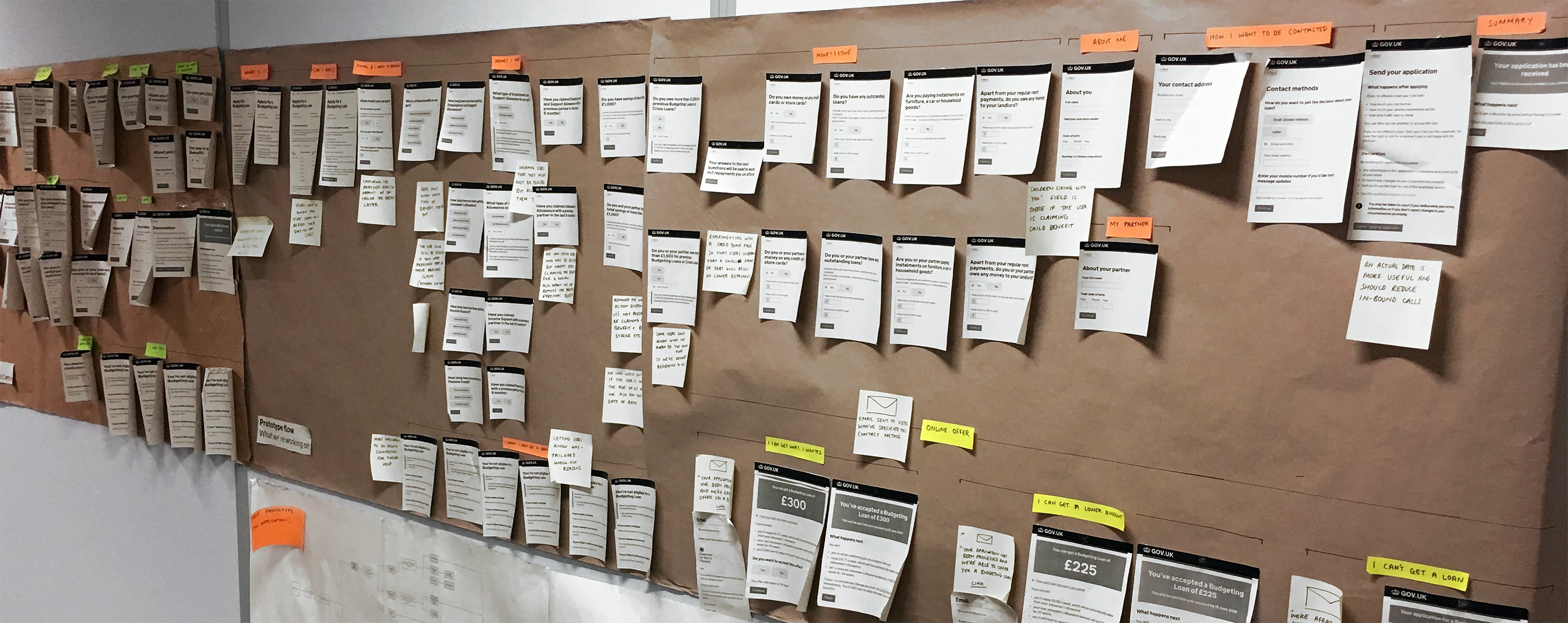Delivering government services with DWP Digital
Working with the Department for Work & Pensions on a number of large-scale services focused on the needs of their users.
My role: Senior Interaction Designer (contract)
Design, prototyping, research
2016 to 2020
The Department for Work and Pensions (DWP) is the largest government department in the UK. It’s changing the way it delivers public services. User-centred design is crucial as the department serves some of society’s most vulnerable people.
Along with working on transactional GOV.UK services, I’ve also worked on back-office processes and staff-facing services.
Budgeting Loans
Budgeting Loans are government loans available to people who receive certain benefits. They’re designed as an interest-free alternative to payday lenders. Until recently, applying for a Budgeting Loan relied on a paper-based application process.
I started working with the ‘Apply for a Budgeting Loan’ team soon after the service had moved into its private beta phase. Service teams in government follow an agile process made up of specialist roles including user research, content design, front-end development, software engineering, business analysis, data analysis and security. I was the interaction design lead on the service for 8 months and helped to take it from private beta through to passing its public beta Government Digital Service (GDS) assessment.
The work I did ranged from high-level user flows and exploration of the full end-to-end service, through to the detail of the individual web page components. I followed a hypothesis-driven methodology; first assumptions were validated to make sure that we were focusing on real problems and then prototypes were produced and tested in user research sessions to see whether the designs were performing as intended. The service was gradually introduced to every jobcentre in the UK. As the number of users increased, we were able to iterate based on data that was captured by the analytics.



The Apply for a Budgeting Loan service is now live on GOV.UK and receives thousands of applications each day. We were able to simplify the application process dramatically by eliminating unnecessary questions and have increased user satisfaction by reducing error rates and the time it takes to receive the loan.
Health and disability services
More recently, I spent 18 months focusing on health and disability services with DWP. My work under the department’s health transformation programme has included:
- discovery research and service mapping to understand the work management needs of third-party healthcare professionals
- interaction design for tactical COVID-19 service, allowing claimants to apply for Personal Independence Payment from home
- supporting the Employment and Support Allowance team to meet the government standard (service now live on GOV.UK)

Phil’s strengths lie in blank paper design and creating a different way of looking at things. His motivation and determination to improve a service were key to the success of our service. He took a problem, derived a way to make it better and brought the team along with him whilst doing this. Phil would be an asset to any team.
Michala Hare
Lead Product Manager, DWP